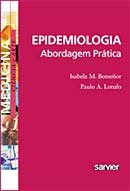Shah Ebrahim é editor do International Journal of Epidemiology e, um arguto observador da cena mundial. Abaixo, um texto instigante exigindo mais ação e menos sensacionalismo ou de como o culto às celebridades nos desvia de questões da maior importância, como a prevenção da aids.
Media hype: good or bad for patients and the health care system?Shah Ebrahim
E-mail: shah.ebrahim@lshtm.ac.uk
Kylie Minogue develops breast cancer and the associated publicity might well be expected to increase young women's demand for breast screening. Kelaher and colleagues1 demonstrate the expected increase in breast imaging (about 20%) in the months following publicity. Interestingly, the biopsy rate did not change in younger women and declined in older women. The odds of surgical procedures following biopsy also fell markedly. These findings led the investigators to propose that the media furore affected doctors as well as patients, leading to a retraction of usual evidence-based practice in the months after the publicity. Is this a good or a bad thing? Celebrity disease is something that can be used to good public effect—notably Ronald Regan's Alzheimer's disease diagnosis contributed to moving dementia syndromes from Cinderella status to high National Institutes of Health funding opportunities in the United States.
But what about preventing breast cancer given rising incidence rates (http://info.cancerresearchuk.org/cancerstats/types/breast/incidence/). Kylie Minogue was young but was at risk due to nulliparity—a powerful risk factor, first recognized in the 1920s by Janet Lane-Clayton.2 The Million Women study has demonstrated the importance of number of children and breast feeding, among other risk factors,3 prompting Valerie Beral, its director, to urge greater research on prolactin, a hormone that increases in late pregnancy and regulates lactation, at a recent UK National Cancer Research Institute conference.
While there are plenty of ‘orphan’ or neglected diseases craving publicity, AIDS is not one of them. The theme of this issue is human immunodeficiency virus—do we still need upper case to denote its importance? Usually associations of social inequalities and disease are negative—it is the poor that suffer. In an analysis of the Tanzanian HIV/AIDS indicator survey, higher standard of living was associated with increased odds of HIV infection, whereas there was no evidence of association with education.4 Higher occupational status was associated with HIV in women but unemployed men were at greater risk than working men. These findings indicate that simplistic notions of HIV risk among rich and poor need to be more nuanced in appreciating what is clearly a complex social matrix of risk.
Perhaps the greatest success in the last year has been the randomized trial evidence, building on a decade of observational epidemiology, demonstrating the reduction in risk of infection due to male circumcision. Many doubted the original observational evidence, so it is particularly gratifying to see how large robust clinical trials have been implemented and pooled to provide strong, compelling evidence of benefit in terms of relative risk reductions as big as a halving of risk.5 On a recent visit to South Africa, in a particularly high prevalence location, I asked about how this new evidence was going to change policies, practices and research directions locally. ‘Not at all’ was the reply.
The prospect of persuading young men to have circumcisions is not everyone's favourite challenge, but it does seem important that preventive surgical initiatives are evaluated and that private sector circumcisions are safely performed, for example. Londish and Murray's6 paper in this issue follows in the steps of previous attempts to model the effects of male circumcision using a wider range of covariates than in previous models. They conclude that targeting of interventions to younger men with risky sexual behaviours is the most effective strategy. In an accompanying commentary, Gray and colleagues7 question whether models will persuade reluctant health service providers and funders to invest in services. They note that several obvious conclusions derive from commonsense: the impact of circumcision is clearly going to be greatest in high HIV incidence but low circumcision prevalence places; circumcising men who are HIV positive is unlikely to be helpful and may increase transmission of infection to sexual partners; opting for infant circumcision, rather than adolescent and adult surgery, will delay any impact by 20 or more years.
HIV modelling also gets some criticism in Elizabeth Pisani's remarkably entertaining and insightful book, The Wisdom of Whores,8 reviewed in this issue by John Cleland from the London School of Hygiene and Tropical Medicine9. Pisani was a student of demography at the School and went on to build a successful career in HIV modelling having been a journalist formerly. The story she tells is of misdirection of research effort and resources as individuals and institutions attempt to get their share of the action. I took this with me for holiday reading and was not disappointed. I recommend you read Cleland's review, get a copy of the book and read it too—whether you are in the HIV field or not.

Nenhum comentário:
Postar um comentário